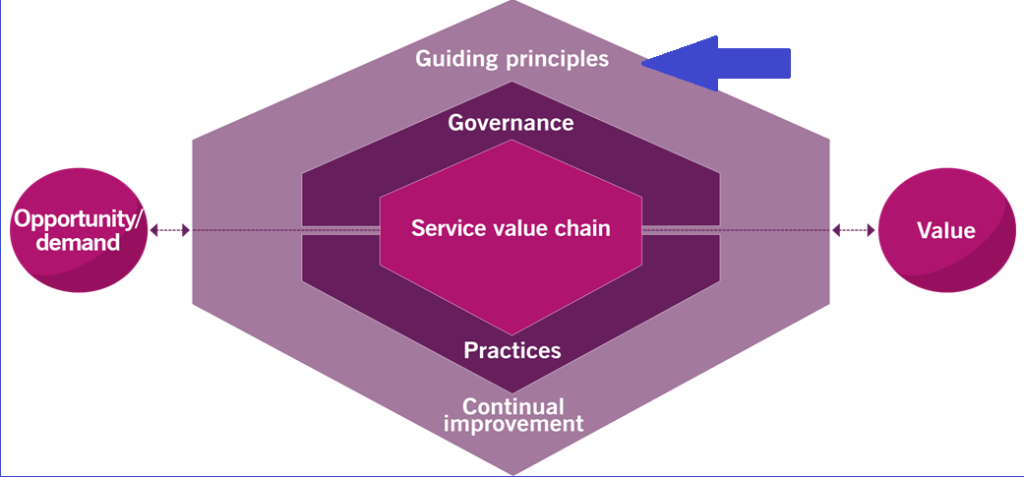ITIL4® – Seven Guiding Principles
“A guiding principle is a recommendation that guides an organization in all circumstances.”
One of the most important components of the ITIL Service Value System is the ITIL Guiding Principles.

A guiding principle is nothing but a recommendation that provides universal and enduring guidance to an organization, and applies in all circumstances, regardless of changes in its goals, strategies, type of work, or management structure.
In every day operations many things change like Goals, Staff or Management structure but The principles remain constant, no matter what else changes.
The guiding principles should encourage and support continual improvement. They apply across the whole organization at all levels – ALL staff should be aware of them. In each situation, staff and organizations should consider their principles and what is applicable.
Not all principles are relevant in every situation, but they all are reviewed on each occasion to assess if they are appropriate.
The 7 ITIL Guiding Principles are as follows:
· Focus on value
· Start where you are
· Progress iteratively with feedback
· Collaborate and promote visibility
· Think and work holistically
· Keep it simple and practical
· Optimize and automate
Let us understand the Guiding Principles in detail now:
Focus on value
Everything the organization does should link back, to value for itself, its customers, and other stakeholders. The focus on value principle encompasses many perspectives, including the experience of customers and users.
Start where you are
Do not start from scratch and build something new without considering what is already available for use. There is likely to be a great deal in the current services, processes, programmes, projects, and people that can be used to create the desired outcome.
The current state should be researched and observed directly to make sure it is fully understood.
Progress iteratively with feedback
Do not attempt to do everything at once. Even huge initiatives must be accomplished iteratively.
By organizing work into smaller, manageable sections that can be executed and completed in a timely manner, it is easier to maintain a sharper focus on each effort.
Collaborate and promote visibility
Working together across boundaries produces results that have greater buy-in, more relevance to objectives, and increased likelihood of long-term success. Achieving objectives requires information, understanding, and trust.
Work and consequences should be made visible, hidden agendas avoided, and information shared to the greatest degree possible.
Think and work holistically
No service, or element used to provide a service, stands alone.
The outcomes achieved by the service provider and service consumer will suffer unless the organization works on the service as a whole, not just on its parts.
Results are delivered to internal and external customers through the effective and efficient management and dynamic integration of information, technology, organization, people, practices, partners, and agreements, which should all be coordinated to provide a defined value.
Keep it simple and practical
If a process, service, action or metric fails to provide value or produce a useful outcome, eliminate it. In a process or procedure, use the minimum number of steps necessary to accomplish the objective(s).
Optimize and automate
Optimization means to make something as effective and useful as it needs to be.
Before an activity can be effectively automated, it should be optimized to whatever degree is possible and reasonable. Organizations must maximize the value of the work carried out by their human and technical resources. Eliminate anything that is truly wasteful and use technology to achieve whatever it is capable of.
Human intervention should only happen where it really contributes value.